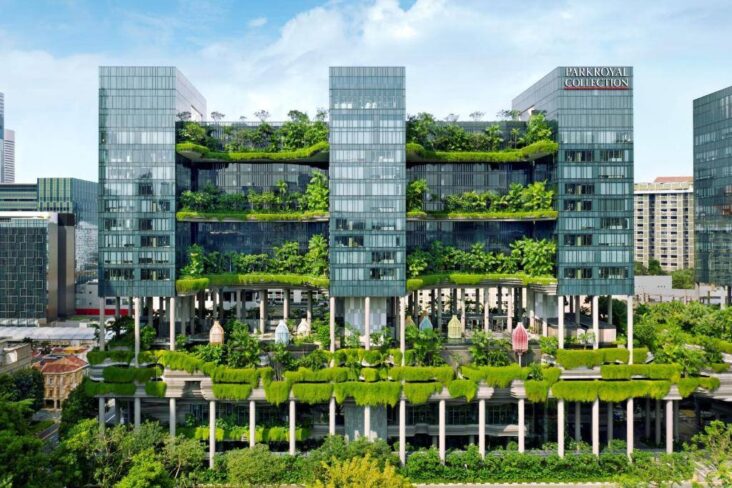Sustainability is no longer a buzzword in Singapore’s property landscape. It has evolved into a foundational principle shaping how homes are built, designed, and lived in. Developers, architects, and policymakers are aligning on one clear goal: to make the city’s residential spaces greener, cleaner, and smarter.
As more Singaporeans demand energy-efficient living and healthier surroundings, green developments are rapidly moving from niche projects to mainstream investments.
The New Shape of Urban Living
Singapore’s identity as a “City in a Garden” is now extending from public parks and nature reserves into residential enclaves.
Projects like Pinery Residences are redefining how modern homes balance comfort, greenery, and efficient design.
Green architecture, biophilic design, and smart energy systems are turning modern condos into microcosms of sustainability.
Today’s developments often integrate:
- Solar panels for common-area electricity.
- Rainwater harvesting systems.
- Facade shading and cross-ventilation layouts that minimize heat.
- Vertical gardens and rooftop farms.
- Electric vehicle charging stations.
- Smart home systems that monitor water and energy use.
What once felt like luxury features are fast becoming expected standards. Developers realize that sustainability sells, not only for environmental reasons but also for the comfort, health, and cost savings it brings to residents.
A prime example is Narra Residences, which showcases how urban architecture can merge natural calm with city convenience.
Why Green Homes Are Becoming the Norm
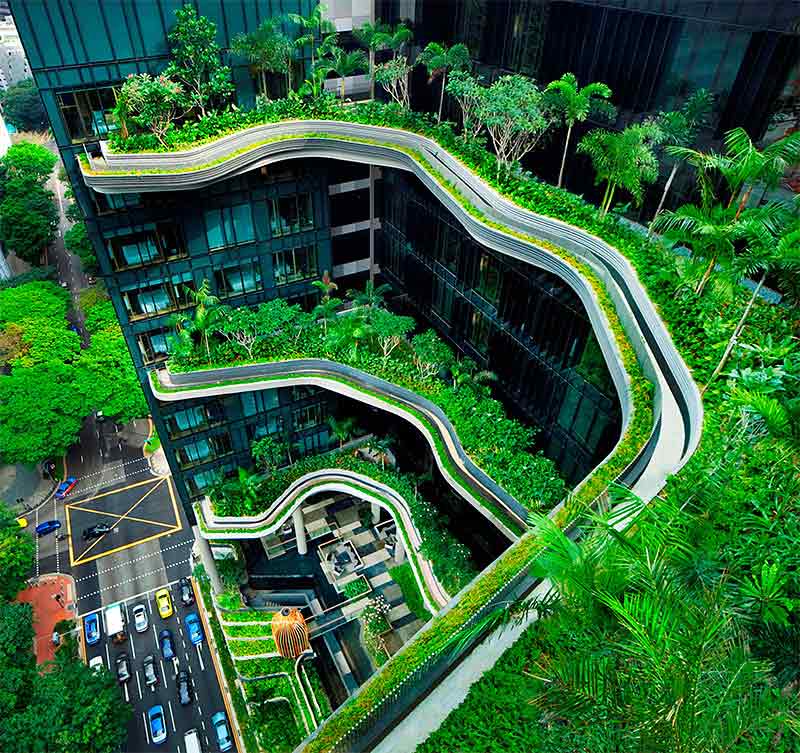
Several factors are driving this transformation, starting with national policy. The Building and Construction Authority (BCA) has been championing the Green Mark certification since the mid-2000s, pushing for energy-efficient design across public and private buildings. But government policy is only part of the equation.
Equally important is buyer sentiment. Modern homebuyers, particularly younger generations, see sustainability as a form of future-proofing. A green home reduces electricity bills, retains long-term value, and enhances daily well-being.
With urban heat, rising energy prices, and the realities of climate change, such features are no longer optional, they’re a form of insurance.
Growing Buyer Awareness
Property buyers in Singapore are increasingly informed. They pay attention to energy labels, solar integration, and even the kind of greenery a project includes.
Many now ask developers about the building’s carbon footprint, waste management systems, and whether it incorporates recycled materials.
Developments that can clearly demonstrate sustainable value often gain an edge in sales and long-term appreciation. Eco-friendly is just smart economics.
Key Green Features Leading the Shift
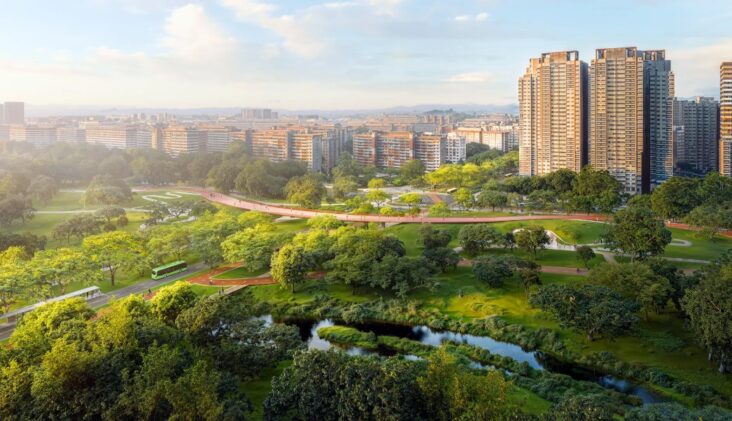
Let’s look closer at some of the defining traits of Singapore’s new generation of green residential projects.
1. Passive Cooling Design
Buildings are being designed to work with nature, not against it. Orientation, shading, and ventilation patterns are carefully planned to keep homes cool without heavy reliance on air conditioning.
Double-glazed windows, light-colored facades, and open courtyard layouts are all contributing to lower indoor temperatures.
2. Smart Energy Management
Solar panels now appear on the rooftops of both private condos and public housing blocks.
Some projects integrate energy management systems that automatically adjust lighting and air conditioning based on occupancy or time of day. Such systems optimize consumption and lower utility bills over time.
3. Water Efficiency
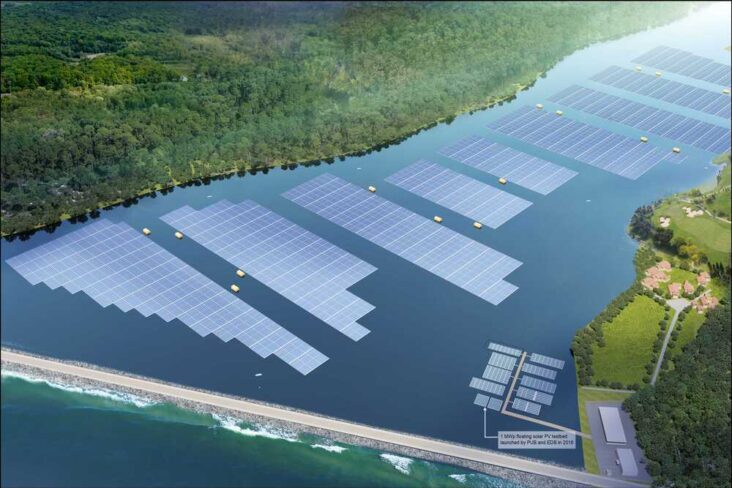
Rainwater harvesting and water-recycling systems are becoming standard. Collected water is used for landscape irrigation or cooling systems, reducing dependence on treated water. Low-flow taps and dual-flush toilets add further efficiency.
4. Greening of Shared Spaces
Rooftop gardens, green walls, and communal planting areas are transforming the way people relate to their environment.
They lower the ambient temperature, purify the air, and provide shared spaces that encourage community living.
5. Sustainable Materials
Developers are opting for responsibly sourced timber, recycled steel, and low-VOC paints. Even the choice of construction methods matters, with some adopting modular techniques to minimize waste.
| Feature | Benefit to Residents | Long-Term Impact |
| Solar energy systems | Lower electricity bills | Reduced carbon footprint |
| Vertical greenery | Cooler environment | Better air quality |
| Smart meters | Real-time usage tracking | Encourages responsible habits |
| Rainwater reuse | Water savings | Less strain on utilities |
| Eco-friendly materials | Healthier indoor air | Durable, low-maintenance finishes |
Where Innovation Meets Livability
Developers are no longer competing only on size, views, or proximity to MRT lines. The new differentiator is livability: how efficiently a home functions while reducing environmental strain.
In Singapore, where land scarcity meets tropical weather, innovation is often the only way forward.
Community-Centered Sustainability
Some new developments introduce shared urban farming spaces and edible gardens. Residents can grow herbs or vegetables, share produce, and connect through a shared green culture. These initiatives promote a deeper sense of place and responsibility.
Integrated Green Mobility
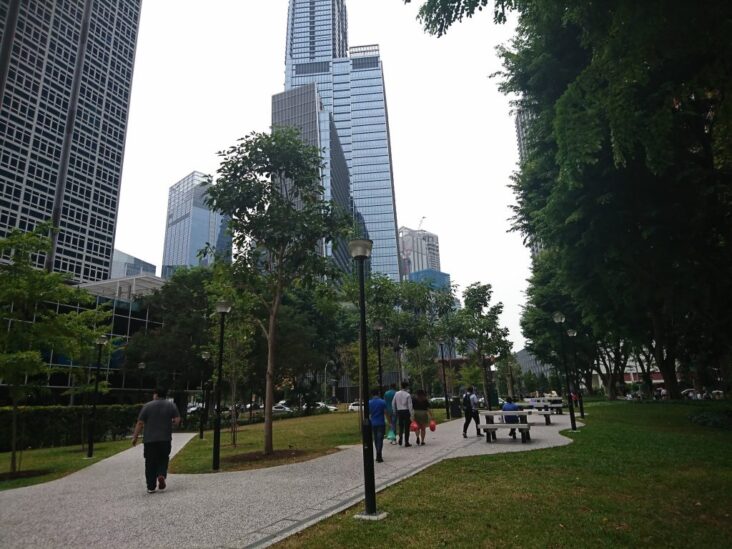
Car-lite living is another pillar of sustainable design. Bicycle parking zones, pedestrian-friendly layouts, and electric car charging stations encourage cleaner transport habits.
Some developments also partner with mobility apps or shared vehicle schemes to reduce individual car ownership.
Biodiversity in Urban Areas
Developments are incorporating native plants and trees to attract pollinators and birds, rebuilding small urban ecosystems within the city.
This not only enriches the landscape but also reduces maintenance since native species require less watering and care.
Public Housing
While private developments often get the spotlight, Singapore’s public housing sector has been quietly leading the way for years. The Housing & Development Board (HDB) integrates eco-friendly design into its new estates, including solar panels, centralised chutes for recyclables, and greenery that cools and beautifies the surroundings.
Punggol, known as Singapore’s first eco-town, serves as a model for future estates. It incorporates water-sensitive design, wide cycling networks, and smart lighting. Such ideas are now being replicated in other districts, bridging the gap between public and private sustainability standards.
Investment Outlook for Green Developments
Green homes don’t just benefit residents, they’re proving resilient in the market. Investors are starting to recognize that sustainability is tied to value retention. Energy-efficient units often attract stronger resale prices and rental interest, particularly among younger tenants and expats conscious of climate impact.
Beyond individual gains, investors see alignment with broader global trends. ESG (Environmental, Social, and Governance) principles are now a key consideration for institutional investors. Owning or funding sustainable real estate offers reputational and financial appeal.
Cost vs. Return
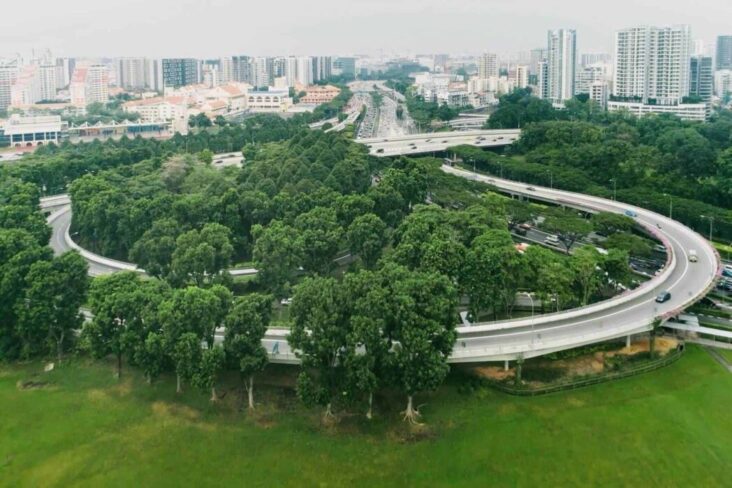
While green features may add to upfront construction costs, they pay off through lower long-term maintenance and energy expenses. Owners save on bills, while developers gain from stronger demand and government recognition. Over time, such factors reinforce the financial logic behind sustainability.
| Cost Area | Traditional Project | Green Project | Benefit |
| Initial Build | Lower | Slightly Higher | Added eco features |
| Monthly Energy | Higher | Lower | 20–30% savings |
| Maintenance | Moderate | Lower | Durable, low-impact systems |
| Market Value | Stable | Higher | Growing buyer preference |
What the Future Holds
Singapore’s path toward greener living is not slowing down. With the government targeting higher Green Mark standards for all new buildings and expanding incentives for sustainable upgrades, the next decade will likely see eco-innovation integrated into every level of housing.
Expect more developments to blend smart technology, community design, and environmental sensitivity. The next wave may include net-zero-energy homes, modular carbon-neutral structures, and even buildings that produce more energy than they consume.
Sustainability will soon define the baseline of quality housing in Singapore, not a premium; longer on square footage or skyline views, but on how homes breathe, consume, and sustain life around them. Developers are proving that environmental responsibility and everyday comfort can coexist without compromise.
As innovation continues to rise, green homes are setting the standard for the next era of urban living: efficient, resilient, and connected to the environment that makes Singapore what it is.

